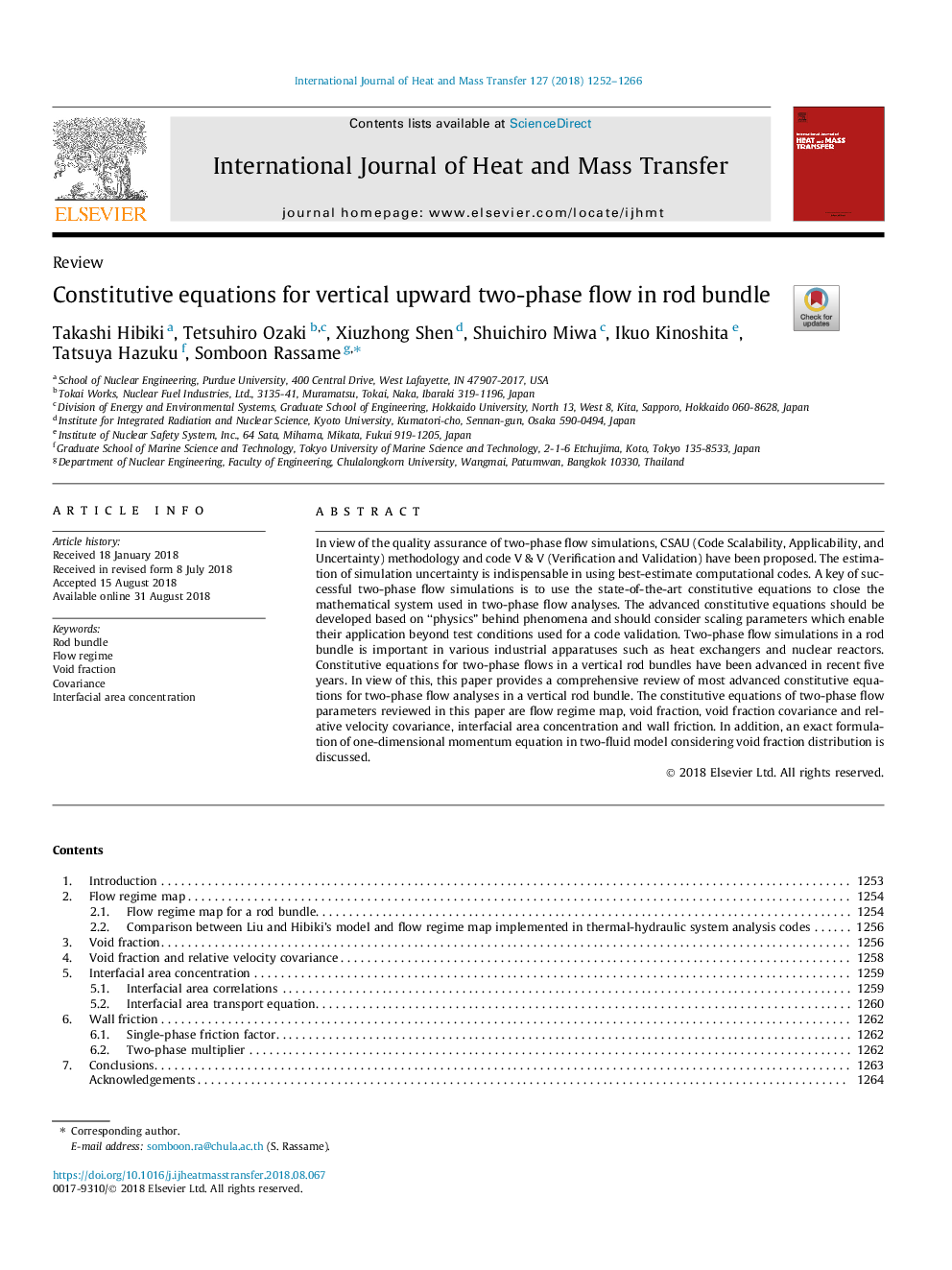| Article ID | Journal | Published Year | Pages | File Type |
|---|---|---|---|---|
| 10127391 | International Journal of Heat and Mass Transfer | 2018 | 15 Pages |
Abstract
In view of the quality assurance of two-phase flow simulations, CSAU (Code Scalability, Applicability, and Uncertainty) methodology and code V & V (Verification and Validation) have been proposed. The estimation of simulation uncertainty is indispensable in using best-estimate computational codes. A key of successful two-phase flow simulations is to use the state-of-the-art constitutive equations to close the mathematical system used in two-phase flow analyses. The advanced constitutive equations should be developed based on “physics” behind phenomena and should consider scaling parameters which enable their application beyond test conditions used for a code validation. Two-phase flow simulations in a rod bundle is important in various industrial apparatuses such as heat exchangers and nuclear reactors. Constitutive equations for two-phase flows in a vertical rod bundles have been advanced in recent five years. In view of this, this paper provides a comprehensive review of most advanced constitutive equations for two-phase flow analyses in a vertical rod bundle. The constitutive equations of two-phase flow parameters reviewed in this paper are flow regime map, void fraction, void fraction covariance and relative velocity covariance, interfacial area concentration and wall friction. In addition, an exact formulation of one-dimensional momentum equation in two-fluid model considering void fraction distribution is discussed.
Related Topics
Physical Sciences and Engineering
Chemical Engineering
Fluid Flow and Transfer Processes
Authors
Takashi Hibiki, Tetsuhiro Ozaki, Xiuzhong Shen, Shuichiro Miwa, Ikuo Kinoshita, Tatsuya Hazuku, Somboon Rassame,
